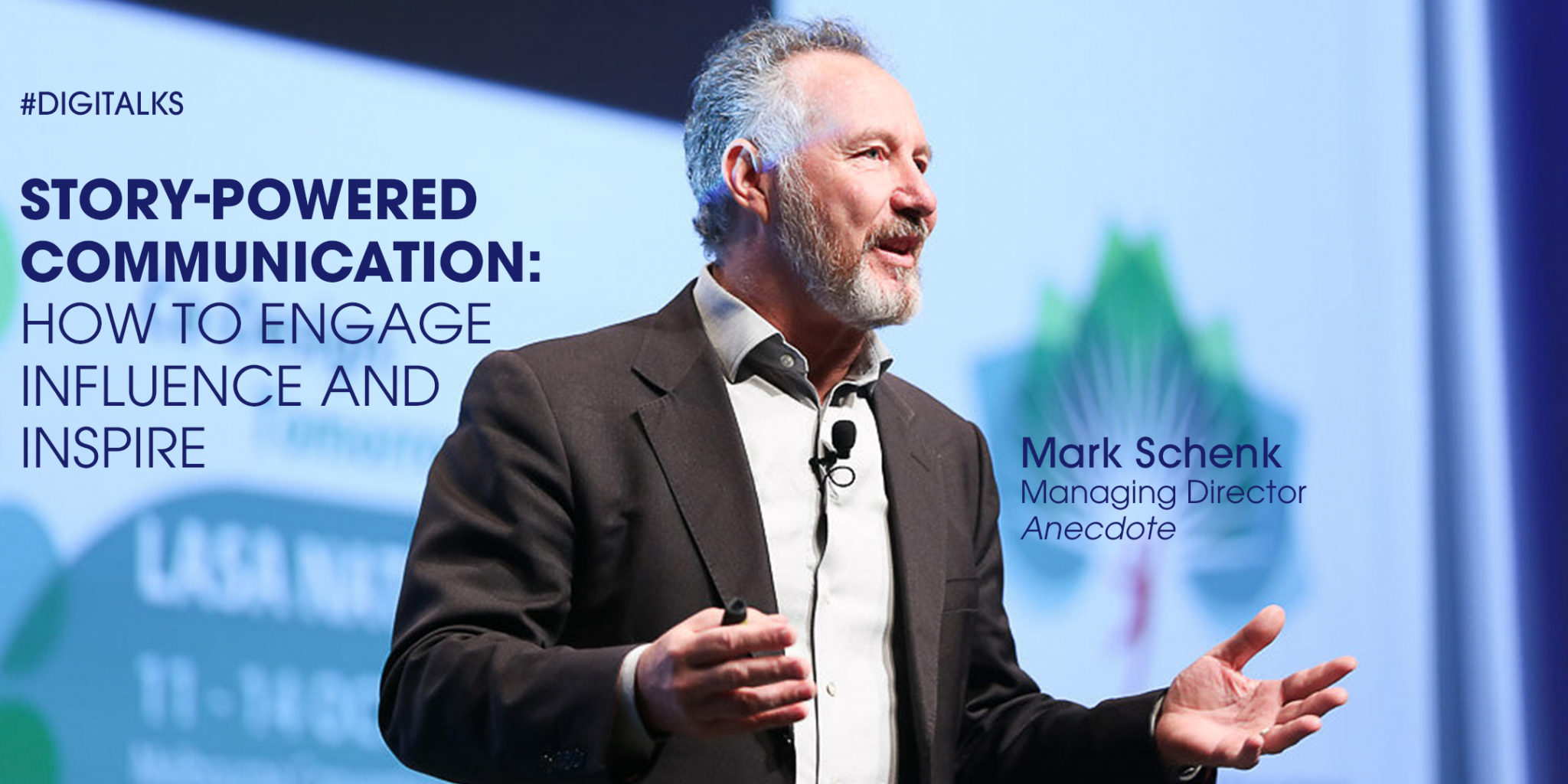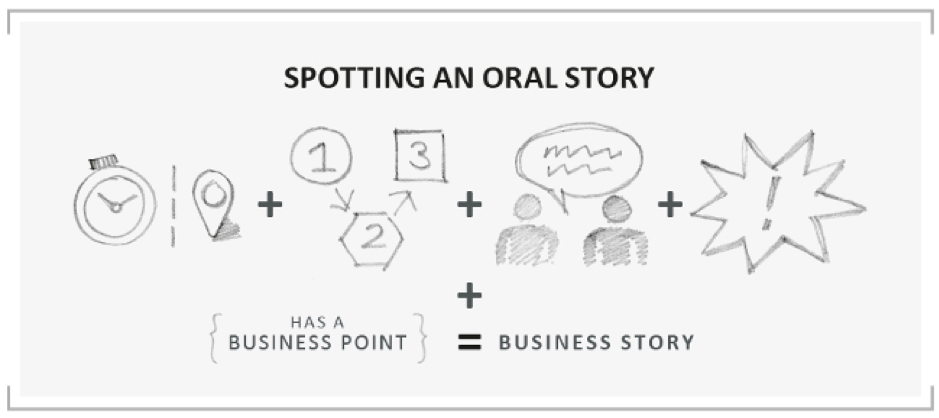When we communicate, we have choices. The example below illustrates how leaders can choose their communication style and dramatically increase their impact.
The manager of a fast-food outlet noticed one of her new staff standing idly, cleaning cloth in hand, during a busy period. Her normal approach would be simply to tell him to clean tables but she'd realised that there was high staff turnover and maybe she needed to change. So she tried something different.
She walked over to him and said: “Do you remember the mother and daughter at table 5 a few minutes ago?” “Yes”, he answered. “How old do you think the daughter was?” she asked. “About 5 I guess” he answered. “Yes, that's what I think as well. I don't know if you noticed what happened when the mother went to the bathroom. The little girl got up on her chair and started licking the table.
It's so important we keep the tables clean.”
The manager then walked off. She looked back and the young man was energetically cleaning tables.
Communication choices
Let's start by looking at the spectrum of communication choices available to us. At one end of the communication, the spectrum is the ‘assertion' approach that focuses on statements, opinions and abstract concepts. At the other end of the spectrum is the ‘story' method that focuses on specific moments (events).
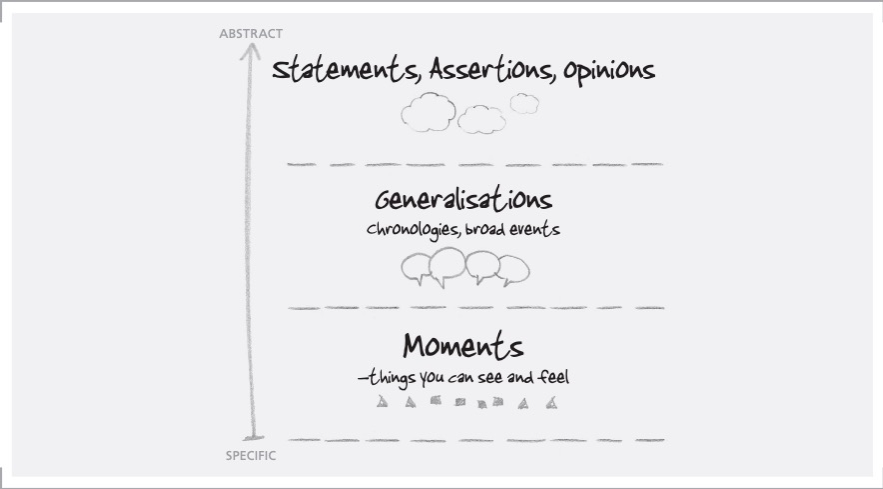
But there is a problem. In our research into leader communication, we estimate that about 90% is strongly oriented towards the ‘assertion' method. In essence, leaders are not making considered communications choices, they are defaulting to a method they have been conditioned to use — a method taught from the time we leave primary school, reinforced at University and beaten into us in the workplace.
True, the assertion method has valid applications and some strengths, but it also has major limitations.
Let's look at some of the implications of defaulting to the assertion method
During 2019, we conducted some research with nearly 1000 business leaders from across the globe. We shared a video of two leaders communicating the same message. One used the assertion method; the other used the story method. We asked participants to record one or two words describing their reaction to each version and assembled them into the following word clouds. The larger the word, the more frequent the word appeared in the responses.
Here is the word cloud for the assertion version:
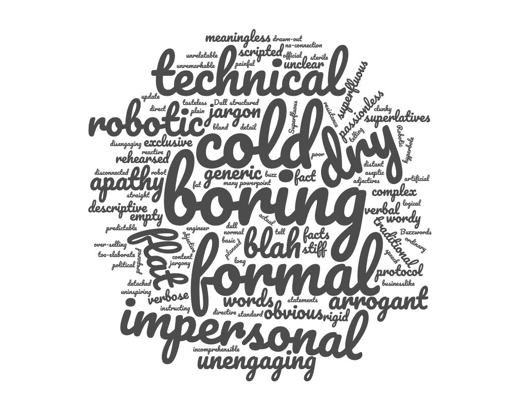
As you can see, the response to the assertion method is very negative — it's not engaging or interesting and the character of the leader is diminished from using this method. Who among us wants our messaging to be assessed as ‘boring', ‘cold', ‘arrogant' and ‘unengaging'?
Here is the word cloud for the story version:
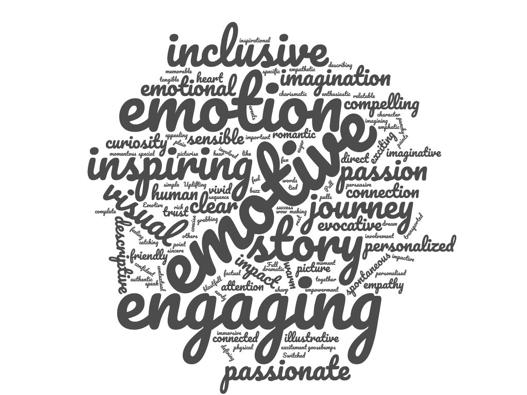
The contrast between the two responses is stark.
The reaction to the story version is overwhelmingly positive and if your objective is to be engaging, influential and inspirational, the story version is by far the better choice.
In his book ‘Within Reason: Rationality and Human Behavior‘, Canadian neurologist and author, Donald Calne wrote ‘The essential difference between emotion and reason is that reason leads to conclusions, while emotion leads to action‘
So, whether you are communicating internally or externally, story is a powerful tool if you want your audience to do something or to believe something.
Given this, why then is the assertion method our default communication choice? My response could fill pages. Suffice to say that Western humanistic thought places ‘reason' as the most godlike of human traits and it is reason that directs most human behaviour. Science has known for nearly 70 years that reason has only a limited impact on our behaviour and decision-making. Yet the assumption of rationality remains deeply embedded in our educational, political, scientific, social and business institutions. This is one of the key reasons that we default to the ‘assertion' method – the misguided belief that our audiences are rational beings and they engage and make decisions based on logic and reason. As you can tell, just opening this discussion about ‘why' is like opening Pandora's Box.
So, let's stick to a more practical question: ‘What can I do to use the story method more as part of my communication repertoire?'. The answer to this question is pretty easy to grasp…but it can be quite difficult to implement — because behaviour change, overcoming our conditioned responses, is hard.
Here are a few tips to help start making more effective communication choices:
1. Understand what a story is
The single more important tip is to understand exactly what a story is…and what it isn't. A few years back, the head of communications for a big company pulled out a slide deck and said “this is our story, and it's a really good one!” I listened for 30 minutes as she used graphs, data, assertions, statements, opinions and generalisations – not even the slightest semblance of story was used. Please understand that just because you point to something and call it a story, doesn't make it a story…even if you call it a story 100 times. A story is something that happens; a sequence of events that occur at a time and place and which have characters. We've written extensively about this over the years and developed a simple framework to help you identify whether what you're saying is a story or not. You can read about it here:

This one tip is the single most important step in being able to use story more effectively as part of your business communication repertoire.
2. Use simple narrative structures in your story
There are a range of simple story structures to make our communication more impactful, understandable and engaging. The most valuable and versatile of these structures is the Clarity Story pattern.
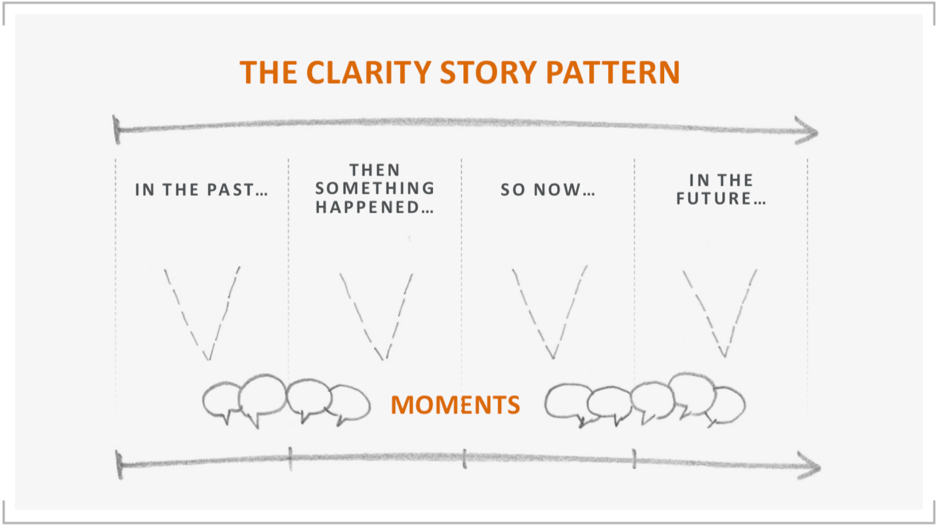
It's perfect for communicating decisions, changes, ideas and strategies – anything big. It's got four key components shown in the diagram. Again, we've written extensively about using this pattern, particularly for communication strategies and changes. Here are a selection of articles and papers where you can do a deeper dive into the use of the Clarity Story pattern in a range of applications:
- Communicating strategy article: https://www.anecdote.com/2019/06/story-communicate-strategy/
- Using the Clarity Story pattern to communicate big ideas: https://www.anecdote.com/communicating-strategy-article/
Summary
All of us have the opportunity to make different choices when we communicate – amply demonstrated by the opening example. The first step is to be aware of the communication style that we are conditioned to default to and to know that other choices are available. Then, with a few key skills and some practice, we all have the ability to tap into the power of story-powered communication.
Get in touch with any of the team at Anecdote if you want to find out more. Better still, buy us a coffee and get us talking about our favourite topic – Story-Powered Communication.
Latest.

AI adoption failing isn’t the tech, it’s the people. How smart businesses overcome this.
Technology, Thought Leadership, Industry Trends

Temp-to-perm is the best way to hire today.
Hiring Insights

How to keep top talent: Strategies for successful onboarding
Hiring Insights, Ask Aquent, Training Resources
